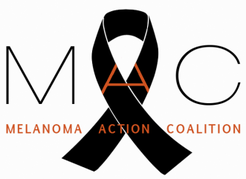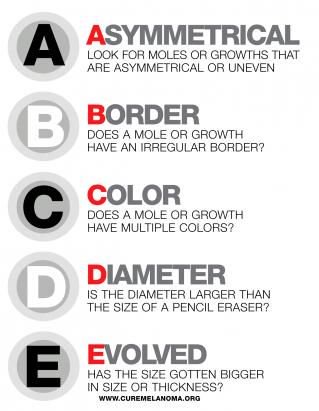Early Detection
Statistics tell us that melanoma caught early is highly curable. When it has progressed and spread to other organs, however, survival rates decrease dramatically. You yourself are your best early detector.
Get to Know Your Skin
Check your own skin once a month. Get to know the pattern of moles, freckles, and other marks on your skin
Learn Your ABCDE'sMost people have moles and most moles are harmless. Learn the difference between a normal mole and one that may signal melanoma. Normal moles are usually evenly colored. They can be brown, tan or black; flat or raised; round or oval. They are usually less than 1/4 inch across (about the width of a pencil eraser). Use the ABCDE Guidelines to help you identify potentially harmful moles: Pay attention to moles or growths that are asymmetrical, have an irregular border, exhibit changes in color, have a diameter larger than the size of a pencil eraser, or have evolved in size or thickness. If you notice one or more of these sign, or if you notice a spot that is different from others, itches or bleeds, make an appointment to see a board-certified dermatologist.
Those at higher risk for skin cancer (fair skin, red or blonde hair and light eyes, history of sunburn/excessive UV radiation exposure, having many or unusual moles, family or personal history of melanoma, weakened immune system) should consider discussing the benefits of regular skin examinations with their dermatologist or healthcare provider. |
Be Especially Aware of Any Changes
Moles can be present from birth or appear later in life, but after they appear they usually stay the same for many years. It is important to notice any changes in a mole's size, shape, or color.
Check Out Anything Suspicious
See a reputable dermatologist right away if you notice any suspicious change on your skin. Find one who includes skin cancer and melanoma as a focus of his or her practice.
Find a Dermatologist
When caught early skin cancer is highly treatable. Visit the American Academy of Dermatology website to search for a dermatologist or a free skin screening in your area:
Find a dermatologist
Find a free SPOTme® skin cancer screening
Find a dermatologist
Find a free SPOTme® skin cancer screening


